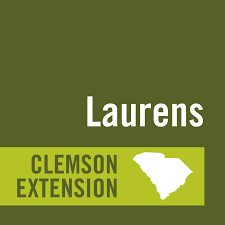March Yard and Garden Tips
March 1, 2024March Yard and Garden Tips
Watch out for:
Lawns
• White grubs – March begins the cycle of treatment for grub problems in your lawn. The bacteria Bacillus thuringiensis (Dipel, etc.) does a nice job on Japanese Beetle grubs, but it does take a little time to build up in the soil. Bacillus thuringiensis does not, however, control other types of grubs. See White Grub Management in Turfgrass for more information.
Things to do:
Flowers
• Pruning – March is a nice time to prune your repeat-blooming roses such as floribunda and hybrid tea roses, just as the buds break dormancy. Do not prune your once-flowering roses now, but instead prune them after the bloom. See Pruning Roses for more information.
Lawns
• Fertilizer – it’s time for application of nitrogen for Bermuda grass and zoysiagrass lawns that have been overseeded for the winter. Follow the recommendations on your soil test report for your lawn. DON’T fertilize centipede or St. Augustine yet, nor warm-season lawns that were not overseeded. See Fertilizing Lawns for more information.
• Crabgrass and goosegrass – make the initial attack on your war with these weeds this month. You will need an application of a pre-emergent herbicide this month and again in June. See Grassy Weeds for more information.
• Wild garlic and wild onion – March is the time for the second herbicide application for these two problems if you have them in your yard. See Wild Garlic and Wild Onion for information on herbicides and rates of application.
• Henbit – this nice little lawn weed can be a problem. Treat now to prevent its return this summer. See Henbit for more information.
• Nutsedge or “nutgrass” – nutsedge is very difficult to control. There are two main types in our area – purple and yellow. You must identify which you have before you begin treatment. Herbicides must be applied when the nutsedge is actively growing, which means decent soil moisture and warm conditions. See Nutsedge for more information.
• Trampweed – if you saw this fluffy-looking weed last summer and fall, now is the time to treat your yard to prevent its return. This should be your second treatment if you have a cool-season lawn. Treat your warm-season lawn in November and February. See Annual Trampweed for more information.
• Irrigation – now is a good time to inspect your irrigation system for repairs and upgrades. You should also scan your automatic timer’s manual to re-familiarize yourself with how to set times. See the Home and Garden Center’s irrigation publications for more information.
Ponds
• Pond fertilization – if your pond needs fertilization this month is a good time. Do not fertilize within 4 to 6 weeks of liming the pond. See Fertilizing Recreational Fish Pondsfor more information.
Vegetables
• Vegetables – Some planting times for more common vegetables (See Planning a Garden for a full list and planting depths and spacings):
o Asparagus crowns – early February – late March
o Cabbage – Feb. 15 – Apr. 1
o Carrots – Mar. 1 – 15
o Lettuce – Mar. 1 – 15
o Irish Potatoes – Mar. 15 – 30
o Turnips – Feb. 20 – Apr. 1
All pamphlets referenced in this calendar may be found online: http://www.clemson.edu/hgic or http://www.clemson.edu/cafls/departments/esps/factsheets/.
The Clemson University Cooperative Extension Service offers its programs to people of all ages, regardless of race, color, gender, religion, national origin, disability, political beliefs, sexual orientation, gender identity, marital or family status and is an equal opportunity employer.




















